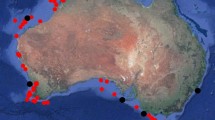Abstract
There has been a long-standing debate concerning how dangerous seismic surveys are with respect to marine life. Marine seismic work today is dominated by airgun technology, where high energy is generated by a release of compressed air into the water. The objective of the “Time coded impulse seismic technique” project is to examine whether a new low energy acoustic source can be used for seismic purposes. If the method turns out to be successful, the low output energy and continuous operation will make the source suitable in environmental sensitive areas. The Low level Acoustic Combustion Source (LACS) is a petrol driven pulsed underwater acoustic source. It operates at a few meters depth, and each shot can be digitally controlled from the surface by a computer located in the mother vessel. A presentation of the recorded LACS signal characteristics, the modulation, the Pseudo Noise coding/decoding principles and field test results, is given. The importance of using an optimized code with fine resolution and of using the near field recording as a correlator sequence is demonstrated. Clear correlation peaks could then be seen from the bottom and sub bottom reflectors.




















Similar content being viewed by others
References
Barbier MG, Viallix JR (1973) Sosie: a new tool for marine seismology. Geophysics 38:673–683
Barbier MG (1982) Pulse coding in seismology. International Human Resources Development Corporation, Boston
Barbier MG (1983) The mini-sosie method. International Human Resources Development Corporation, Boston
Baeten G, Ziolkowski A (1990) The Vibroseis source. Elsevier Science Publishers B.V., Amsterdam
Cosma C, Enescu N (2001) Characterization of fractured rock in the vicinity of tunnels by the swept impact seismic technique. Int J Rock Mech Min Sci 38:815–821
Cook C E, Siebert WM (1988) The early history of pulse compression radar. IEEE Trans Aero Electron Syst 24:825–833
Freeman RL (1994) Reference manual for telecommunications engineering, 2nd edn. John Wiley & sons, New York
Hampson G, Jakubowicz H (1995) The effects of source and receiver motion on seismic data. Geophys Prospect 43:221–244
Mangerud J (1995) Western Norway. In: Andersen BG, Mangerud J, Sørensen R, Reite A, Sveian H, Thoresen M, Bergstrøm B (eds) Younger ryas ice-marginal deposits in Norway, 155–161. Quaternary Int 28:147–169
Proakis JG, Salehi M (2002) Communication systems engineering. Prentice Hall, Upper Saddle River, New Jersey
Vanneste M, De Batist M, Golmshtok A, Kremlev A, Versteeg W (2000) Multi-frequency seismic study of gas hydrate-bearing sediments in Lake Baikal, Siberia. Mar Geol 172:1–21
Acknowledgements
This work has been supported by the Research Council of Norway. Thanks to Peter Skagen (Naxys), Terje Ystebø (Naxys) and Knut Holmefjord (Naxys) for doing the data acquisition.
Author information
Authors and Affiliations
Corresponding author
Rights and permissions
About this article
Cite this article
Askeland, B., Hobæk, H. & Mjelde, R. Marine seismics with a pulsed combustion source and Pseudo Noise codes. Mar Geophys Res 28, 109–117 (2007). https://doi.org/10.1007/s11001-007-9018-5
Received:
Accepted:
Published:
Issue Date:
DOI: https://doi.org/10.1007/s11001-007-9018-5




